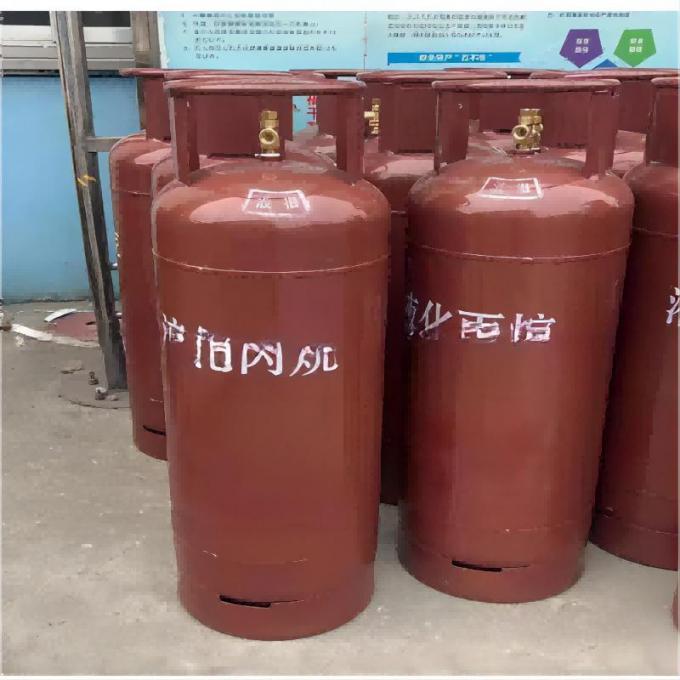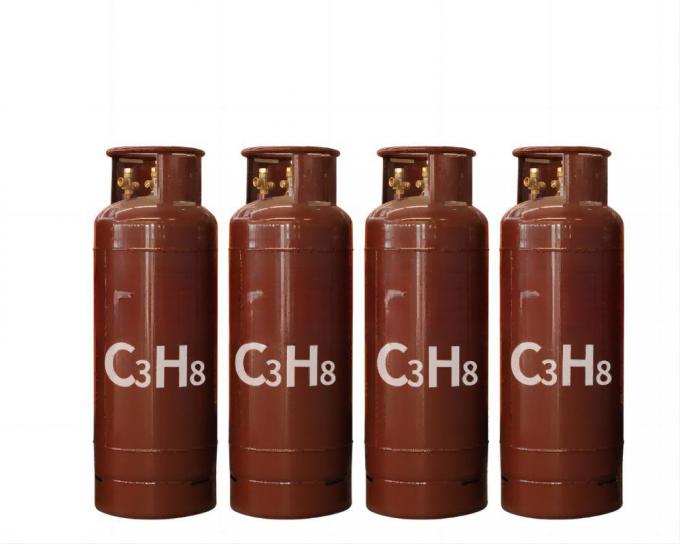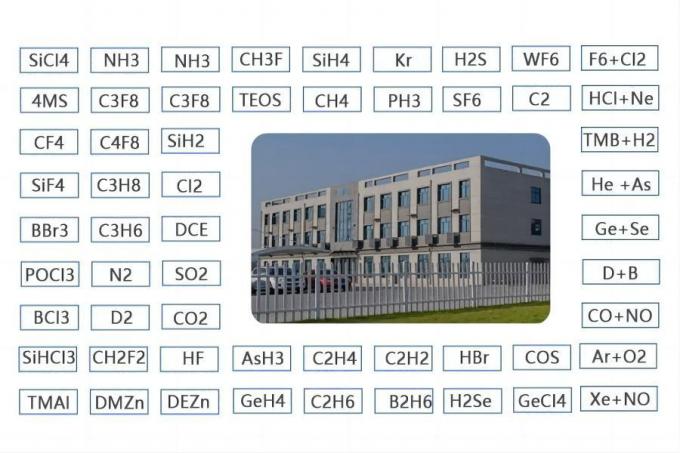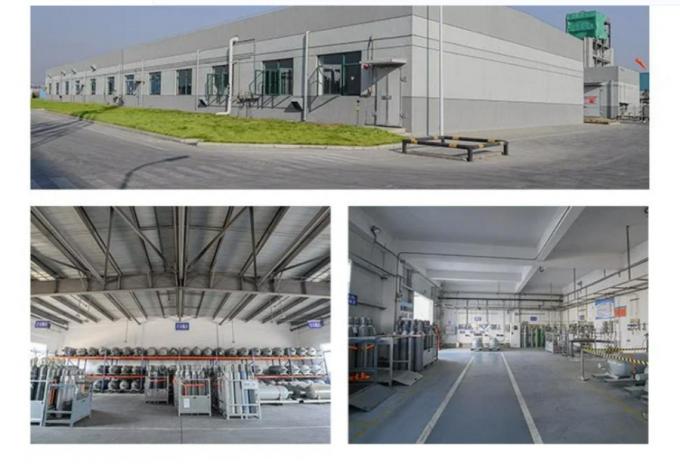


| MOQ: | 1kg |
| Price: | US $3/kg |
| Standard Packaging: | Cylinder/Tank |
| Delivery Period: | 15 days |
| Payment Method: | L/C, T/T |
| Supply Capacity: | 20000 Tons/Year |
Propane gas (C3H8) is a colorless, flammable hydrocarbon gas that is commonly used as a fuel for various applications. It is a byproduct of natural gas processing and petroleum refining. Here are some key points about propane gas:
Properties: Propane gas possesses several important properties:
Flammability: Propane is highly flammable and can ignite easily. It has a lower flammability limit (LFL) of 2.1% and an upper flammability limit (UFL) of 9.5%.
Odor: Pure propane gas is odorless. However, an odorant called ethanethiol (also known as mercaptan) is added to commercial propane to give it a distinct rotten egg or skunk-like smell. This odor is meant to aid in the detection of leaks.
Density: Propane gas is heavier than air, so it tends to sink and accumulate in low-lying areas.
Production: Propane gas is a byproduct of natural gas processing and petroleum refining. It is separated from the other hydrocarbons through fractionation or distillation processes. Propane can also be produced as a byproduct of the production of other fuels, such as gasoline and diesel.
Uses: Propane gas has numerous applications, both residential and commercial:
Residential Heating and Cooking: Propane is commonly used as a fuel for heating homes and water, as well as for cooking in residential settings. It is often used in propane-powered furnaces, water heaters, stoves, and grills.
Commercial and Industrial Applications: Propane is used in various commercial and industrial applications, including space heating, water heating, industrial processes, forklifts, agricultural equipment, and as a fuel for vehicles.
Off-Grid and Remote Areas: Propane is often utilized in areas where natural gas pipelines are not available. It is a popular choice for off-grid homes, cabins, and recreational vehicles (RVs).
Propane Autogas: Propane can be used as an alternative fuel for vehicles, known as propane autogas. It is commonly used in fleet vehicles, school buses, and other transportation applications.
Recreation and Camping: Propane is widely used for camping stoves, lanterns, and portable heaters due to its portability and ease of use.
Safety Considerations: While propane is a safe and commonly used fuel, it is important to follow proper safety guidelines:
Storage and Handling: Propane should be stored and transported in approved containers, such as propane cylinders or tanks, designed for its safe storage and handling.
Ventilation: When using propane indoors, proper ventilation is crucial to prevent the buildup of propane gas and potential risks.
Leak Detection: Propane has an added odorant to help detect leaks. If a strong smell of propane is detected, it is important to evacuate the area, avoid flames or sparks, and contact the appropriate authorities.
Professional Installation: Propane appliances should be installed and maintained by qualified professionals to ensure safety and compliance with regulations.
Proper Use: Follow manufacturer instructions when using propane appliances, and avoid any misuse or modifications that could lead to hazards.
| Transport Package: | 40L/47L/50L/118L/926L | Melting Point | -187.6ºC |
| Trademark: | CMC | Boiling Point | -42.1ºC |
| Specification | 99.50% | Production Capacity | 5000tons/Year |
| Cylinder Pressure | 12.5MPa/15MPa/20MPa | Valve | Cga350/Bwf-1 |
| Appearance | Colorless, Odorless | Density | 493 Kg/M3 |
Specification:
Dot Class:2.2
State: Liquid
Purity: 99.5%
UN NO: UN1978
CAS NO: 74-98-6
Grade Standard: Industrial Grade
|
Specification |
≥99.5 |
% |
|
Methane (CH4) |
≤100 |
ppmv |
|
Ethane(C2H6) |
≤250 |
ppmv |
|
Propylene(C3H6) |
≤1000 |
ppmv |
|
Moisture(H2O) |
≤3 |
ppmv |
|
Sulfur |
≤1 |
ppmv |
|
Isobutane(C4H10) |
≤2500 |
ppmv |
|
N-butane(C4H10) |
≤1000 |
ppmv |
| Cylinder Specifications | Contents | |
| Cylinder Capacity | Valve | Weight |
| 47L | CGA350 | 19 kgs |
| 118L | BWF-1 | 45 kgs |
| 926L | BWF-1 | 375 kgs |
| ISO TANK | 10 Tons | |






| MOQ: | 1kg |
| Price: | US $3/kg |
| Standard Packaging: | Cylinder/Tank |
| Delivery Period: | 15 days |
| Payment Method: | L/C, T/T |
| Supply Capacity: | 20000 Tons/Year |
Propane gas (C3H8) is a colorless, flammable hydrocarbon gas that is commonly used as a fuel for various applications. It is a byproduct of natural gas processing and petroleum refining. Here are some key points about propane gas:
Properties: Propane gas possesses several important properties:
Flammability: Propane is highly flammable and can ignite easily. It has a lower flammability limit (LFL) of 2.1% and an upper flammability limit (UFL) of 9.5%.
Odor: Pure propane gas is odorless. However, an odorant called ethanethiol (also known as mercaptan) is added to commercial propane to give it a distinct rotten egg or skunk-like smell. This odor is meant to aid in the detection of leaks.
Density: Propane gas is heavier than air, so it tends to sink and accumulate in low-lying areas.
Production: Propane gas is a byproduct of natural gas processing and petroleum refining. It is separated from the other hydrocarbons through fractionation or distillation processes. Propane can also be produced as a byproduct of the production of other fuels, such as gasoline and diesel.
Uses: Propane gas has numerous applications, both residential and commercial:
Residential Heating and Cooking: Propane is commonly used as a fuel for heating homes and water, as well as for cooking in residential settings. It is often used in propane-powered furnaces, water heaters, stoves, and grills.
Commercial and Industrial Applications: Propane is used in various commercial and industrial applications, including space heating, water heating, industrial processes, forklifts, agricultural equipment, and as a fuel for vehicles.
Off-Grid and Remote Areas: Propane is often utilized in areas where natural gas pipelines are not available. It is a popular choice for off-grid homes, cabins, and recreational vehicles (RVs).
Propane Autogas: Propane can be used as an alternative fuel for vehicles, known as propane autogas. It is commonly used in fleet vehicles, school buses, and other transportation applications.
Recreation and Camping: Propane is widely used for camping stoves, lanterns, and portable heaters due to its portability and ease of use.
Safety Considerations: While propane is a safe and commonly used fuel, it is important to follow proper safety guidelines:
Storage and Handling: Propane should be stored and transported in approved containers, such as propane cylinders or tanks, designed for its safe storage and handling.
Ventilation: When using propane indoors, proper ventilation is crucial to prevent the buildup of propane gas and potential risks.
Leak Detection: Propane has an added odorant to help detect leaks. If a strong smell of propane is detected, it is important to evacuate the area, avoid flames or sparks, and contact the appropriate authorities.
Professional Installation: Propane appliances should be installed and maintained by qualified professionals to ensure safety and compliance with regulations.
Proper Use: Follow manufacturer instructions when using propane appliances, and avoid any misuse or modifications that could lead to hazards.
| Transport Package: | 40L/47L/50L/118L/926L | Melting Point | -187.6ºC |
| Trademark: | CMC | Boiling Point | -42.1ºC |
| Specification | 99.50% | Production Capacity | 5000tons/Year |
| Cylinder Pressure | 12.5MPa/15MPa/20MPa | Valve | Cga350/Bwf-1 |
| Appearance | Colorless, Odorless | Density | 493 Kg/M3 |
Specification:
Dot Class:2.2
State: Liquid
Purity: 99.5%
UN NO: UN1978
CAS NO: 74-98-6
Grade Standard: Industrial Grade
|
Specification |
≥99.5 |
% |
|
Methane (CH4) |
≤100 |
ppmv |
|
Ethane(C2H6) |
≤250 |
ppmv |
|
Propylene(C3H6) |
≤1000 |
ppmv |
|
Moisture(H2O) |
≤3 |
ppmv |
|
Sulfur |
≤1 |
ppmv |
|
Isobutane(C4H10) |
≤2500 |
ppmv |
|
N-butane(C4H10) |
≤1000 |
ppmv |
| Cylinder Specifications | Contents | |
| Cylinder Capacity | Valve | Weight |
| 47L | CGA350 | 19 kgs |
| 118L | BWF-1 | 45 kgs |
| 926L | BWF-1 | 375 kgs |
| ISO TANK | 10 Tons | |




